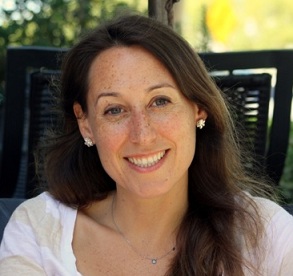 By Joy Rios, Managing Partner at Practice Transformation
By Joy Rios, Managing Partner at Practice Transformation
Twitter: @askjoyrios
On October 14-15, a group of healthcare leaders and innovators gathered for the Connected Healthcare Summit in San Diego, California to share ideas and lessons learned about the current mobile health technology landscape.
Dr. Andrew Litt gave some insightful opening remarks. He explained how in the U.S., we currently do a pretty lousy job of coordinating care. Did you know that the average Medicare patient with one chronic condition sees seven doctors per year? For patients over age 65 who have more than one disease, the number of doctors, physical therapists, or social workers increases significantly.
We have EHRs and other infrastructures in place in the hospitals and in some clinics to help coordinate care with the family members who take care of these folks, but it doesn’t really extend outside the walls of the clinical environment.
That’s where mobile health (aka mHealth or connected health) plays a part.
Most of what happens in the improvement and preservation of our health as an individual is not what happens in the hospital or in the doctors office, it’s what happens outside of that environment. This is where there’s a lot of opportunity to make mobile technology really useful because it affects the day to day continuum of the healthcare plan.
However, to be successful in this space, mobile health needs an ecosystem, and not just a technical one. It needs a procedural or operational ecosystem, or — cough, cough, paging Chuck Webster — it needs workflows, so that if a mobile device (such as a FitBit or iPhone app) spits out data, there’s a professional in place to look at it. Furthermore, mobile health technology must be able to handle high volumes. For when when that day comes that we’re all addicted to our Google Glass, we must ensure that we can turn the massive amounts of data we’re collecting into information that is actionable.
Dr. Litt continued that we’re not just facing a technical problem. It’s also about people.
How do we get people engaged to do this type of work and make it part of their jobs? This is an area where we get a lot of pushback from physicians and nurses, because they are not thrilled about the workflow changes that are asked of them as many of these new mobile technologies become available. And it’s not because they don’t want to take care of their patients – of course they do. It’s just that in many ways mobile health adds a lot of work to their already full loads instead of reducing it.
Over the course of the event, the many challenges in creating an ecosphere for healthcare managed outside of the clinical setting arose. I attempted to document them through Twitter.
1. Data in silos doesn’t really have any power.
There are currently ~11,000 potential silos (aka health companies) identified by @HIMSS where patient data lives. #connectedhealth
— Joy Rios (@askjoyrios) October 14, 2014
2. Mobile health means data is mobile. That’s good, but it’s also dangerous. If we’re not careful with patient data, they will stop trusting us with it.
54% of patients would withhold info if they feel their data isn't protected. #connectedhealth #HIPAA
— Joy Rios (@askjoyrios) October 14, 2014
3. How we interact and design data is important. If it’s indecipherable, people will not use it
It's no wonder doctors are nervous about receiving patient generated health data.How drs see data now #connecthealth pic.twitter.com/moznQhFSfY
— Joy Rios (@askjoyrios) October 14, 2014
4. The reimbursement model is unclear. Who will pay for mobile or telehealth services?
Most states have some form of reimbursement by Medicaid for #telehealth, but no 2 states are alike #connectedhealth pic.twitter.com/3vfplmdsmy
— Joy Rios (@askjoyrios) October 14, 2014
5. The pace of change is hard to keep up with.
"Disruption (in healthcare) is moving faster than the evidence & workflow can keep up with," Dr. Sanjeev Bhavnani #connecthealth
— Joy Rios (@askjoyrios) October 14, 2014
On the bright side, some organizations are making incredible progress. Kaiser Permanente released a mobile app that aligns with their patient portal. This year alone, they’ve engaged more than 1.3 million patients to use it. The stance they take is respectable:
"The data we have belongs to our patients and we want them to have access to it and understand it," Mark Groshek of @KPShare #connecthealth
— Joy Rios (@askjoyrios) October 14, 2014
